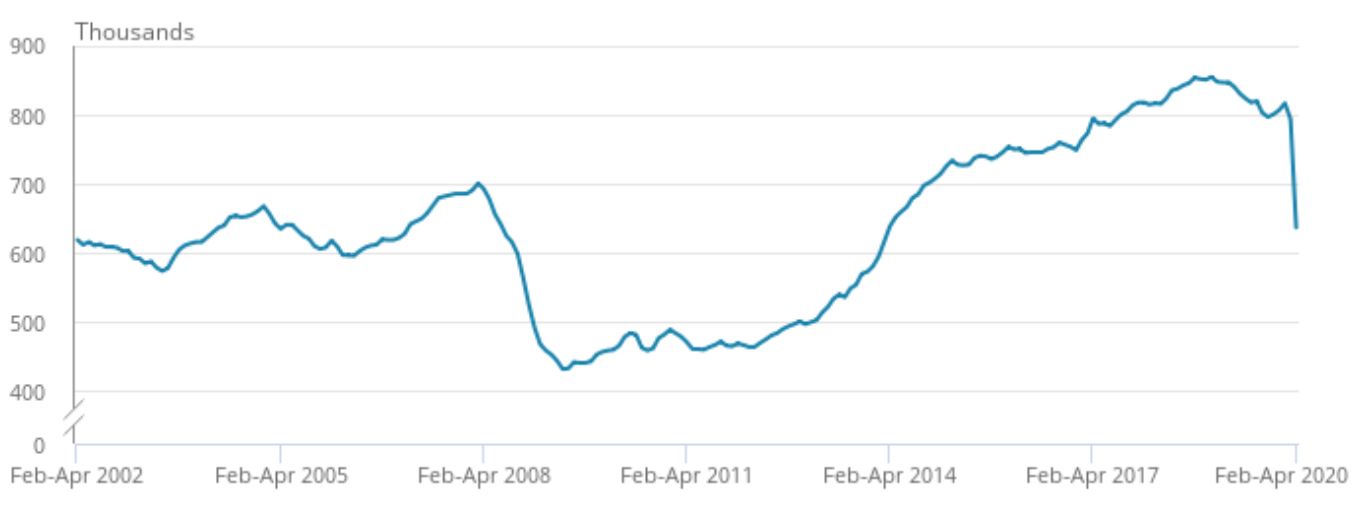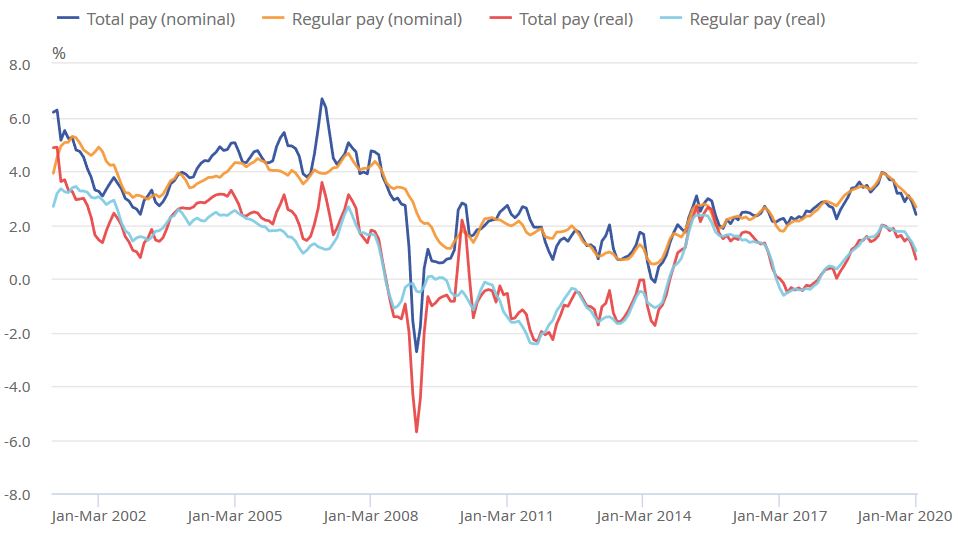ONS Labour Market Overview May 2020
The UK employment rate remained at a joint record high in the three months to March according to the latest ONS data. But early estimates for April suggest an unsurprisingly softer outlook for the UK labour market, with a marked decline in the number of hours worked and job vacancies, as well as a sharp increase in the number of people claiming benefits.
Softening outlook
Based on flash estimates for April using PAYE data, the number of paid employees softened again in April, falling by 1.2% compared with a year earlier. Early estimates for the month suggest that median monthly pay fell by 0.9% compared with last year.
The total number of weekly hours worked decreased at the highest annual rate in more than a decade. Total actual weekly hours worked decreased by 12.4 million – down 1.2% – to 1.04 billion hours between January to March 2019 and January to March 2020. This was driven by around 25% fewer hours worked in the final week of March compared to other weeks within the quarter.
Job vacancies deteriorated further between February and April 2020, with 170,000 fewer vacancies than the previous quarter and 210,000 fewer than a year earlier at an estimated 637,000. Crucially this means there were fewer jobs opportunities out there for those who did lose work because of the coronavirus crisis.
To this end, the ONS’s experimental claimant count data shows that there was a sharp 69.1% increase in the number of claims between March and April, taking the level to 2.1 million from 1.2 million.
Number of vacancies in the UK, seasonally adjusted, between February to April 2002 and February to April 2020

Source: ONS
The retail sector accounted for around 10.2% of all vacancies in the UK in the three months to April.
Record high employment in March
This follows the UK employment rate being at a joint-record high of 76.6% in the three months to March. Overall, the number of people in employment rose to 33.14 million people in the three months to March, up by 448,000 on last year.
The unemployment rate saw a slight increase to 3.9% – up 0.1% points compared to the previous quarter and last year. An estimated 1.35 million people were unemployed – 50,000 more than last year, but 478,000 fewer than five years ago.
Crucially, the weekly unemployment rate did not show any large fluctuations in the last two weeks of March. The government’s Job Retention Scheme is likely to have staved off unemployment in the short term.
The number of people aged from 16 to 64 years old that are economically inactive (not working and not seeking or available to work) remained at a joint record low of 20.2% – down 0.7% points compared to last year and down 0.3% points on the last quarter. This continued to be driven by record low inactivity among women at 24.2%.
Real earnings growth slow
Earnings growth continued its softening trend of late. Average weekly earnings for employees edged down to 2.4% in the three months to March for total pay (including bonuses), and 2.7% for regular pay (excluding bonuses).
This indicates that in real terms (adjusted for inflation) total pay is growing at around 0.7%, and 1.0% for regular pay. This is down from a recent high of 2% in the three months to June 2019.
Great Britain average weekly earnings annual growth rates, seasonally adjusted, January to March 2001 to January to March 2020

Source: ONS
For March 2020 in nominal terms (that is, not adjusted for price inflation):
- Average regular pay (excluding bonuses) for employees in Great Britain was £510 per week before tax and other deductions from pay, up from £498 per week for a year earlier.
- Average total pay (including bonuses) for employees in Great Britain was £540 per week before tax and other deductions from pay, up from £532 per week for a year earlier.
Back to Retail Economic News